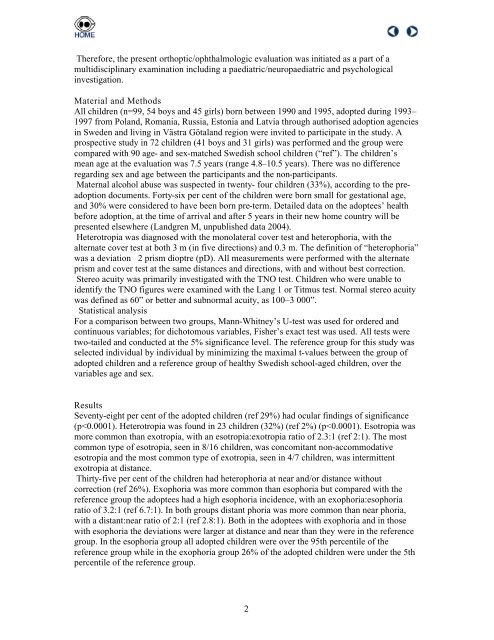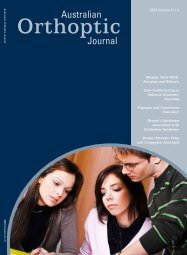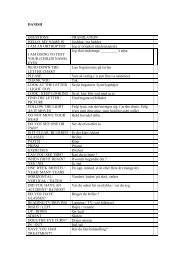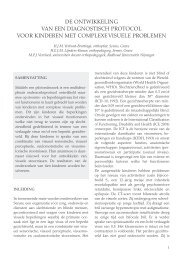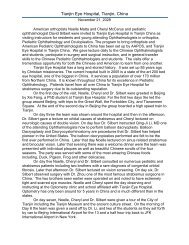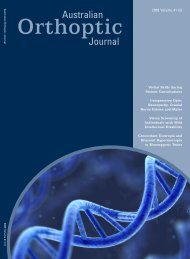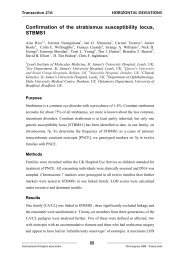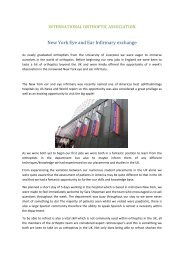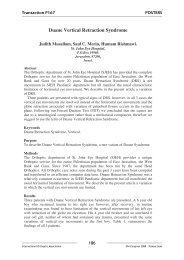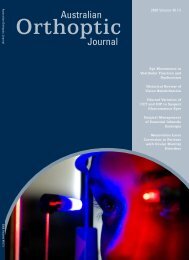Transactions from the Xth International Orthoptics Congress 2004
Transactions from the Xth International Orthoptics Congress 2004
Transactions from the Xth International Orthoptics Congress 2004
You also want an ePaper? Increase the reach of your titles
YUMPU automatically turns print PDFs into web optimized ePapers that Google loves.
Therefore, <strong>the</strong> present orthoptic/ophthalmologic evaluation was initiated as a part of amultidisciplinary examination including a paediatric/neuropaediatric and psychologicalinvestigation.Material and MethodsAll children (n=99, 54 boys and 45 girls) born between 1990 and 1995, adopted during 1993–1997 <strong>from</strong> Poland, Romania, Russia, Estonia and Latvia through authorised adoption agenciesin Sweden and living in Västra Götaland region were invited to participate in <strong>the</strong> study. Aprospective study in 72 children (41 boys and 31 girls) was performed and <strong>the</strong> group werecompared with 90 age- and sex-matched Swedish school children (“ref”). The children’smean age at <strong>the</strong> evaluation was 7.5 years (range 4.8–10.5 years). There was no differenceregarding sex and age between <strong>the</strong> participants and <strong>the</strong> non-participants.Maternal alcohol abuse was suspected in twenty- four children (33%), according to <strong>the</strong> preadoptiondocuments. Forty-six per cent of <strong>the</strong> children were born small for gestational age,and 30% were considered to have been born pre-term. Detailed data on <strong>the</strong> adoptees’ healthbefore adoption, at <strong>the</strong> time of arrival and after 5 years in <strong>the</strong>ir new home country will bepresented elsewhere (Landgren M, unpublished data <strong>2004</strong>).Heterotropia was diagnosed with <strong>the</strong> monolateral cover test and heterophoria, with <strong>the</strong>alternate cover test at both 3 m (in five directions) and 0.3 m. The definition of “heterophoria”was a deviation ≥2 prism dioptre (pD). All measurements were performed with <strong>the</strong> alternateprism and cover test at <strong>the</strong> same distances and directions, with and without best correction.Stereo acuity was primarily investigated with <strong>the</strong> TNO test. Children who were unable toidentify <strong>the</strong> TNO figures were examined with <strong>the</strong> Lang 1 or Titmus test. Normal stereo acuitywas defined as 60” or better and subnormal acuity, as 100–3 000”.Statistical analysisFor a comparison between two groups, Mann-Whitney’s U-test was used for ordered andcontinuous variables; for dichotomous variables, Fisher’s exact test was used. All tests weretwo-tailed and conducted at <strong>the</strong> 5% significance level. The reference group for this study wasselected individual by individual by minimizing <strong>the</strong> maximal t-values between <strong>the</strong> group ofadopted children and a reference group of healthy Swedish school-aged children, over <strong>the</strong>variables age and sex.ResultsSeventy-eight per cent of <strong>the</strong> adopted children (ref 29%) had ocular findings of significance(p


